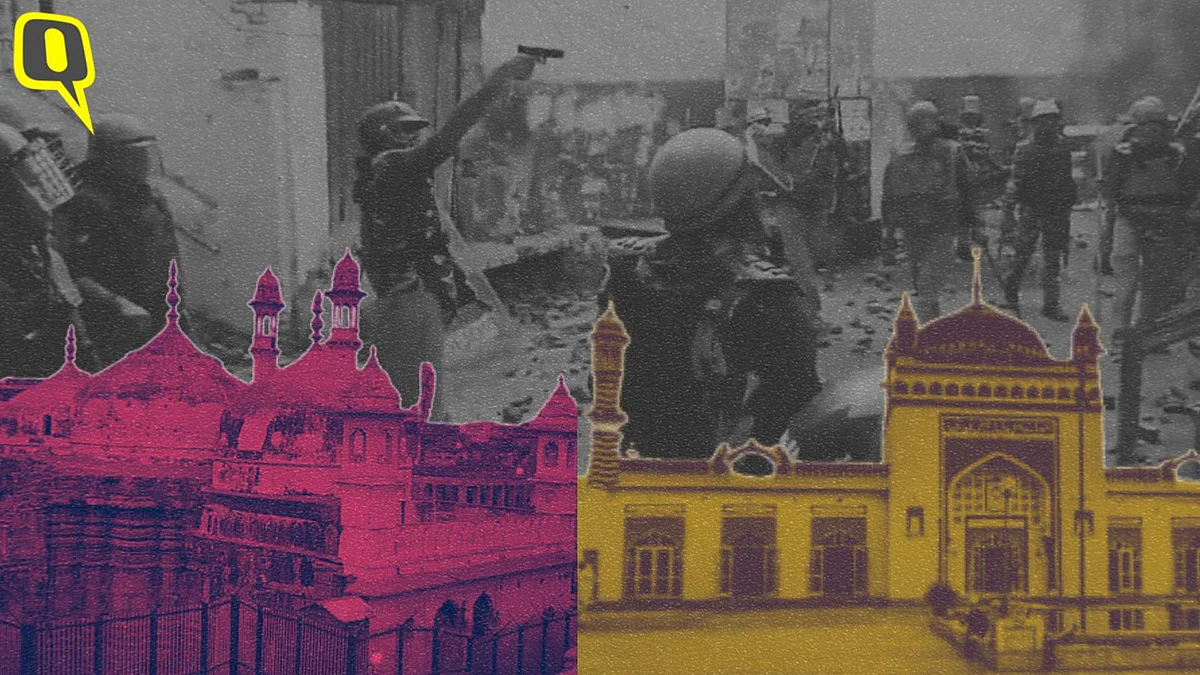What Is the Places of Worship Act? Sambhal & Gyanvapi Mosque Disputes Explained
Did the Gyanvapi Survey Ruling Open the Floodgates for Sambhal’s Mosque Controversy?

advertisement
What Is the Places of Worship Act?
In 1991, amid rising communal tensions during the Ram Janmabhoomi movement, India enacted the Places of Worship (Special Provisions) Act.
The Act's primary objectives:
Maintain the religious character of places of worship as they stood on August 15, 1947.
Prohibit the conversion of any place of worship.
But the Act exempted the Ayodhya dispute, allowing for the eventual construction of the Ram Temple.
Rationale Behind the Act
The Act aimed to:
Preserve the status quo of religious sites.
Prevent communal discord arising from historical grievances.
It aligns with Articles 14 (Right to Equality) and 25 (Right to Freedom of Religion) of the Indian Constitution.
Legal Challenges to the Act
Multiple petitions have been filed challenging the Act's constitutional validity, giving rise to even more disputes.
Even though in its 2019 Ayodhya verdict, the Supreme Court upheld the Act's intent.
The Court emphasized that the Act reinforces the state's commitment to secularism and equality among all religions.
Recent Disputes and Their Implications
Hindu groups claim that the Shahi Idgah Mosque in Mathura was built over Lord Krishna's birthplace.
Similarly, the Gyanvapi Mosque in Varanasi is facing claims that it was built over a Kashi Vishwanath temple.
A bench headed by then CJI, D.Y. Chandrachud allowed a survey of the mosque, and later refused to stay local court's order allowing puja in the mosque's cellar.
One of the reasons why he is being widely criticised and accused of opening the floodgates for challenges to the Places of Worship Act.
During the hearing on the Gyanvapi case, in October 2023, in response to the contention that the Gyanvapi suit was barred by the 1991 act, Chandrachud said that: “The Act says you can’t alter or convert the nature of the place. They’re not seeking conversion of the place.”
These actions cast doubt on the applicability of the Act, directly challenging its provisions.
A fresh example is the events unfolding in Sambhal, Uttar Pradesh.
The Shahi Jama Masjid in Sambhal faces legal challenges over its historical status.
A petition was filed by SC advocate Vishnu Shankar Jain on behalf of Mahant Rishiraj Giri and seven others claiming that the Shahi Jama Masjid in Sambhal was the erstwhile site of the Harihar Temple. Jain is also an advocate in the Gyanvapi Mosque case of Varanasi.
The same day, the court of Civil Judge (Senior Division) Aditya Singh admitted the petition and ordered a survey of the Mughal-era mosque to be conducted.
Soon, rumour spread that Jama Masjid was being dug up without the court’s permission, which led to panic, crowding, and eventually clashes and arson. At least five men—all Muslim—have been killed in the police firing.
Sambhal remains tense, grappling with the aftermath of violent clashes and communal unrest.
These disputes have led to communal tensions in the past and continue to highlight the fragile communal balance and the risks of reopening historical disputes.
A reminder why the Places of Worship act was passed 33 years ago.